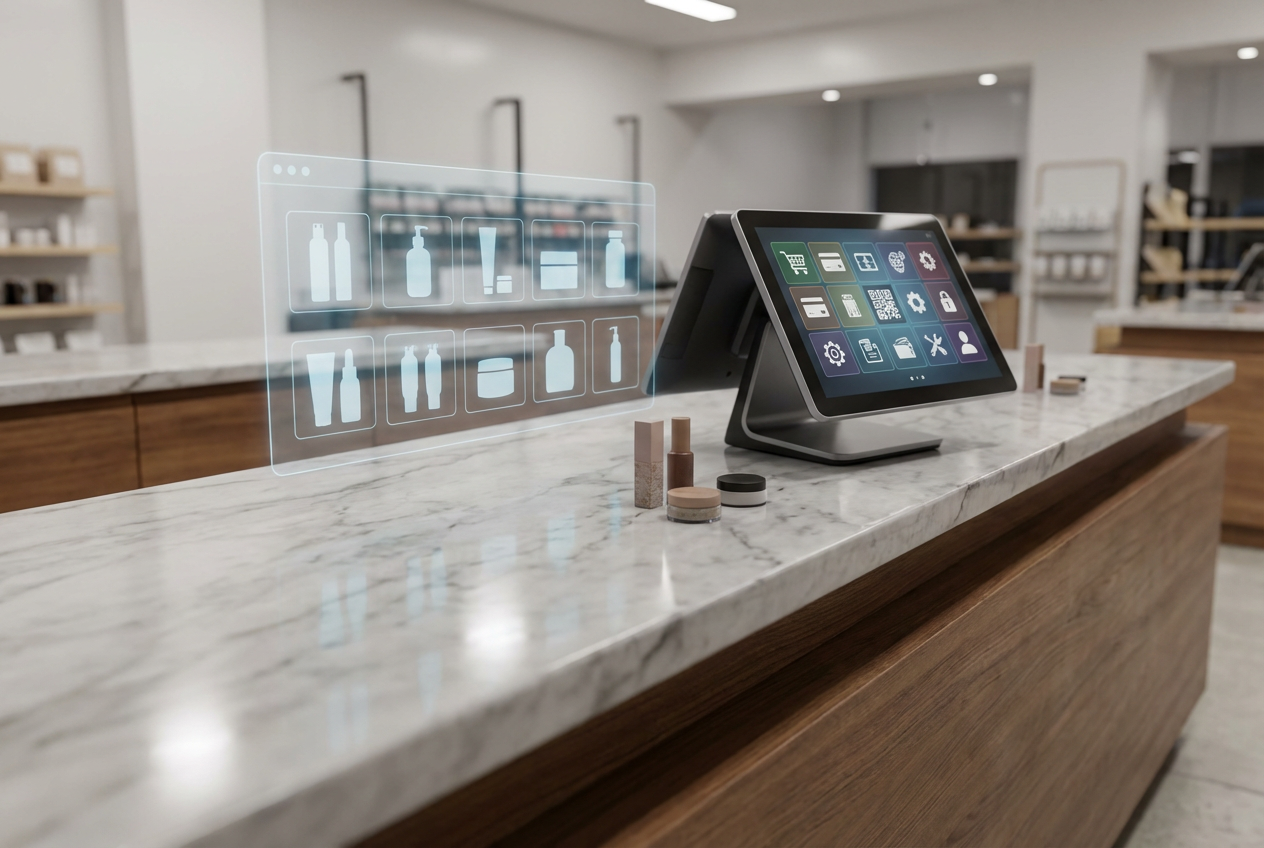Running a business involves countless routine tasks, and over time, these can slow down progress if handled manually. Many of these recurring actions like approvals, updates, or coordination across teams are necessary but time-consuming. Workflow automation addresses this by bringing structure to repeated processes, making them easier to manage and faster to complete. Automating these flows removes common delays but also keeps operations running without constant oversight.
This article shares insights from ConnectPOS, drawing on real-world retail and technology experience to help businesses integrate automation into their process management strategies more effectively.
Highlights:
- Automating recurring tasks such as email handling, data entry, and HR processes helps businesses remove delays, cut down errors, and keep daily operations consistent across departments.
- Identify repetitive tasks, map out workflows visually, involve employees in setup and training, and track performance regularly to refine processes over time.
What Is Workflow Automation?
Workflow automation is the process of using software and technology to streamline and automate repetitive tasks and processes within an organization. This can involve connecting different applications, automating data entry, and triggering actions based on specific events, ultimately saving time and improving efficiency.
The Workflow Automation Market size is estimated at USD 23.77 billion in 2025, and is expected to reach USD 37.45 billion by 2030, at a CAGR of 9.52% during the forecast period (2025–2030). This growth reflects how more businesses are turning to digital tools to manage routine operations.

Replacing repetitive tasks with digital systems is known as workflow automation. This process often runs on a single platform that includes a variety of functions to help simplify daily work in just minutes. It helps bring consistency to tasks while keeping company policies aligned with predefined business rules.
The main goal of this approach is to cut down on mistakes that often happen in routine activities. It supports smoother task handling at work while keeping operations accurate and consistent. Businesses using this method can handle more work with fewer disruptions, as many steps run without needing manual input.
Common Business Processes You Can Automate
Businesses are shifting routine operations such as marketing, HR, and finance into automated workflows. This shift helps support daily goals through structured systems that manage repeated tasks with less manual input.
Marketing Operations
Marketing activities often involve repeatable steps that consume time and attention. Workflow automation helps carry out those actions without manual handling. Email campaigns can run on auto settings, executing pre-planned sequences that include content and promotional messages.
These actions take just a few clicks to set up and can reach intended goals in a short period. Repetition and error become less frequent, making room for teams to focus on broader tasks. This setup fits businesses across various sizes, aiming to achieve quicker outcomes without expanding effort.
This approach isn’t limited to digital-first companies. Many brands now rely on automated email flows to stay in touch with their audiences through a single dashboard. It covers collecting live customer data, saving account information, and responding with appropriate follow-up messages. Welcome emails are one of the first steps. After sign-up, preset templates are triggered to land in subscribers’ inboxes at the right moment.
►►► Optimal solution set for businesses: Multi store POS, Next-gen POS, Inventory Management Software (MSI), Self Service, Automation, Backorders
Some ways businesses apply this kind of automation in their marketing:
- Building stronger contact over time
- Requesting input from users
- Guiding potential customers toward purchase
- Keeping communication active and relevant
Human Resources
HR tasks such as onboarding and training call for consistency and speed. Repeating these actions manually can slow progress, so running workflows in automatic mode becomes a practical step forward. Keeping records also becomes more manageable. Instead of relying on manual input, systems can log and update employee data across areas like insurance, benefits, and allowances with greater reliability.
Performance reviews and payroll cycles can also follow preset automation rules. According to a McKinsey report, 45% of current paid activities can already be handled by existing technology, translating to $2 trillion in total annual wages. These systems cut down on clerical involvement and allow HR teams to step back and assess patterns or gaps across operations. Some of the observed outcomes include:
- Faster exchange of data supports team output
- Less dependency on paperwork lowers storage and printing activity
- HR tasks stay in line with established internal policies
- Hiring and training processes move faster, helping the company scale
- Removing repetitive work opens the door for reviewing and adjusting procedures
Accounting and Finance
Manual processing in finance often leads to mistakes. Tasks such as reimbursements, travel approvals, and expense tracking take up time and can result in delays. Once workflow automation is applied, each step becomes traceable and more predictable. Problems like approval backlogs or calculation slip-ups are less likely to interfere.
Workflow settings can cover tasks such as confirming travel expenses, checking employee requests, or settling invoices. This structure helps keep the financial side of operations more orderly. Key results include:
- Reimbursements and approvals proceed on their own
- Business travel decisions are processed through rules set in advance
- Expense and invoice actions move forward without constant checks
5 Steps to Deploy Effective Workflow Automation to Maximize Your Efficiency
Automation helps businesses handle tasks faster and with fewer errors. Repetitive jobs like managing spreadsheets, sorting emails, or filing documents often slow down progress. When these are replaced with automated workflows, teams stay focused and daily goals become easier to meet.
Automation cuts down on manual steps, limits mistakes, and brings more clarity to each process. Before moving forward, it’s worth understanding what steps shape a reliable workflow automation setup.
Identify repetitive tasks
The first step is to identify the areas in the business where tasks repeat often. Gaining a clear view of daily operations helps reveal where automation could make the most impact. Using visual tools like flow diagrams helps clarify how work moves through different teams and where patterns appear.
Once the repetitive tasks are mapped out, a new workflow automation can be planned to replace the current manual actions. Involving the teams who work directly with these systems allows for more practical input. Conversations with stakeholders can help shape a plan that fits real business needs. Time savings and more structured processes tend to follow once the new system is in place.
Define clear business goals
Once the main challenges in workflow management are clear, the next step is to set clear business objectives. These should be defined in comparison with current manual efforts. One key aim is to shorten the time needed to meet deadlines while improving how teams complete tasks through better resource use.
This shift may allow staff to spend less time on repeated data entry and more time analyzing outcomes and shaping better decisions. Depending on the goals set, the next move is to determine how automation can support those outcomes and to establish ways to track progress toward each one.
Choose the right software
Once the objectives are defined, the next step is choosing how to act on them through workflow automation. Selecting the right workflow tool plays a central role in this process. Each solution on the market brings its own structure and approach, so it’s important to find one that fits your business environment. Many organizations are now considering cloud-based platforms for the convenience and lower costs they provide.
Before making a decision, questions around system capabilities, certifications, and data protection need to be addressed. A short list of three or four options based on your goals can help narrow the field. Reviewing the strengths and limitations of each, along with requesting a product demo, allows for a better judgment before rollout.
A final factor to weigh is usability. Employees need to work with the platform daily, so the interface and workflow logic should feel natural and easy to follow.
Train your team
The next step involves preparing employees to work with the new workflow automation software. Without proper context, workflow changes introduced by management may be viewed as unnecessary. In this case, the software serves a different purpose, it gives staff more input in how tasks are managed. Early training supports this shift and helps employees understand where they fit into the new process.
Involving the team in discussions and encouraging feedback during this phase creates more clarity. When people understand how the system works and what it solves, they are more likely to share practical ideas. This type of participation plays a role in how well the organization adapts and moves forward.
Measure KPIs and iterate
Once the previous steps are in place, feedback from users helps assess how well the workflow software performs. Their experience points to what works and what needs adjustment. This input allows managers to track specific metrics and evaluate whether the setup aligns with business goals.
Continued observation reveals patterns that may be slowing things down. Identifying those areas opens the door to changes that support better outcomes. As teams adjust and refine their routines, overall output often improves.
How ConnectPOS Supports Workflow Automation
ConnectPOS plays a central role in aligning ecommerce operations with automation-first strategies. It connects product management, customer data, orders, content, and third-party systems under a unified platform, creating a direct path for workflow automation across departments.
With robust APIs and no-code workflows, businesses can respond faster, personalize communication, and uncover growth opportunities without adding manual overhead. ConnectPOS’s ecommerce automation software drives retail automation by making real-time actions from inventory to email campaigns, responding to actual buyer behavior.
- Unified Product and Order Automation: Product visibility, pricing, category assignments, and stock levels can be updated through automated flows. This allows marketing, logistics, and merchandising teams to act on changes without delays.
- Smart Order Monitoring and Alerts: The system sends automatic tracking updates and notifications tied to order status. This keeps customers informed and improves trust, while flagging risks early for internal teams.
- API-Driven System Connections: ConnectPOS works with CRMs, ERPs, loyalty programs, and B2B tools through robust HTTP request capabilities. These connections make automation possible across platforms and keep data synced across customer touchpoints.
- Behavior-Based Customer Segmentation: Shoppers are grouped by their actions and patterns, allowing automation tools to trigger timely and relevant campaigns with greater precision.
- Campaign Timing Based on Stock and Demand: Inventory signals can drive pricing decisions and discount schedules. When demand surges or stock dips, promotions can pause, activate, or adjust without human input.
Group Pricing for Product Sets: Businesses can apply unique pricing strategies across product categories automatically, shaping promotions to suit customer types and purchase history. - Personalized Email Journeys: Messages adapt based on behavior. From first-time buyers to dormant accounts, each message aligns with the customer’s current relationship with the brand.
- Automated Re-Engagement Triggers: Shoppers who go quiet aren’t forgotten. Personalized incentives tied to past activity can be scheduled to reintroduce them to new products or campaigns.
- Cross-Channel Integration for Marketing and Sales: Marketing tools, POS data, and backend systems speak the same language through automation, allowing each campaign or workflow to respond to real events without delay.
- Real-Time Campaign Adjustment: Promotions linked to specific inventory levels, customer actions, or transaction patterns can self-adjust. Teams can trust that campaigns remain aligned with store realities both online and offline.
- Integration Without Limits: ConnectPOS links directly with CRMs, ERPs, email marketing systems, loyalty tools, POS platforms, and B2B solutions. It also works as a middleware, syncing with any API-driven system. This integration setup allows every part of your operation to communicate clearly, keeping processes consistent, data up to date, and teams focused on what matters.
ConnectPOS provides the infrastructure needed to make ecommerce automation run across departments without constant supervision. This builds stronger processes and smarter responses throughout the business lifecycle.
FAQs: Workflow Automation
How does workflow automation help improve day-to-day business operations?
It removes manual bottlenecks like data entry or task handoffs, which helps teams focus on higher-value work. This leads to faster response times, fewer errors, and better coordination between departments like sales, marketing, finance, and customer service.
Is workflow automation only for large enterprises?
No. Small and mid-sized businesses also use automation to improve accuracy and cut unnecessary manual work. Many platforms, like ConnectPOS, support scalable automation that fits businesses of different sizes and structures.
What kind of tasks can be automated using workflow automation tools?
Tasks commonly automated include email marketing sequences, order fulfillment alerts, employee onboarding steps, inventory updates, customer follow-ups, loyalty reward triggers, and report generation.
Conclusion
Bringing workflow automation into daily workflows signals more than a process improvement, it reflects a shift in how operations evolve toward greater agility and responsiveness. When repetitive tasks are handled through automation, teams gain more room to focus on work that requires strategy and insight.
Organizations that take the time to assess their operations, define the right workflows, and involve staff in the transition tend to unlock more lasting value. The result goes beyond improved productivity, it creates a business environment that operates with greater consistency and clarity.
A solution like ConnectPOS helps connect point-of-sale data, customer interactions, and marketing automation tools laying the groundwork for smarter operations. To see how ConnectPOS fits into your automation strategy, contact us now!
►►► Optimal solution set for businesses: Shopify POS, Magento POS, BigCommerce POS, WooCommerce POS, NetSuite POS, E-Commerce POS



